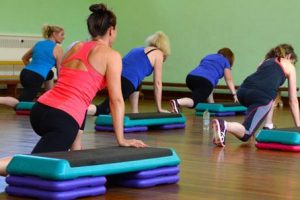When it comes to fitness, few aspects are as vital as core strength. A strong and stable core is the foundation for overall physical well-being. While many individuals associate core strength with having a flat stomach and visible abs, it extends beyond aesthetics. Core strength is the key to improved posture, reduced risk of injury, enhanced athletic performance, and better daily functioning. In this comprehensive guide, we’ll explore the intricacies of core strength training, with a particular focus on developing a robust abdomen and back.
The Importance of Core Strength
Core strength, often referred to as the powerhouse of the body, encompasses all the muscles in the abdomen, lower back, pelvis, and hips. These muscles provide stability and support to the spine, pelvis, and surrounding structures. A strong core is essential for maintaining proper body alignment, which, in turn, reduces the risk of injuries and back pain. Whether you’re an athlete aiming to improve your performance, someone recovering from back issues, or an individual seeking better functional fitness, developing core strength is a fundamental requirement.
Anatomy of the Core
Before diving into core strength training, it’s essential to understand the anatomy of the core. The core is not limited to just the six-pack muscles (rectus abdominis) and the lower back. It comprises several muscle groups, including:
- Rectus Abdominis: These are the muscles responsible for the “six-pack” appearance and help flex the trunk.
- Obliques (Internal and External): These muscles assist in rotation and lateral flexion of the spine.
- Transverse Abdominis: This deep muscle wraps around the abdomen and provides stability and support.
- Erector Spinae: The muscles of the lower back responsible for spinal extension and maintaining an upright posture.
- Multifidus: These small muscles run along the spine and assist in stabilizing individual vertebrae.
- Pelvic Floor Muscles: These muscles support the pelvic organs and play a crucial role in core stability.
Understanding this complex network of muscles is essential for effective core training.
Benefits of Core Strength Training
- Improved Posture: A strong core helps maintain proper body alignment, reducing the likelihood of poor posture-related issues.
- Injury Prevention: Core strength provides stability to the spine and pelvis, reducing the risk of back injuries during physical activities.
- Enhanced Athletic Performance: Athletes from various disciplines rely on core strength for power and stability during their movements.
- Pain Reduction: For those suffering from lower back pain, core exercises can help alleviate discomfort and promote recovery.
- Daily Functionality: A strong core is crucial for everyday activities, such as lifting objects, bending, and even sitting with good posture.
- Aesthetic Benefits: While not the primary goal, core strength training can help define and tone the abdominal muscles.
Core Strength Training Exercises
Now that we understand the importance of core strength, let’s explore some effective exercises to build a strong abdomen and back.
1. Planks
Planks are a classic isometric exercise that engages the entire core. To perform a plank:
- Start in a push-up position with your forearms on the ground.
- Keep your body in a straight line from head to heels, engaging your core muscles.
- Hold for as long as you can maintain proper form.
Planks can be modified to increase intensity or target specific areas of the core.
2. Russian Twists
Russian twists are excellent for working the obliques. To do Russian twists:
- Sit on the floor with your knees bent and feet flat.
- Lean back slightly and lift your feet off the ground.
- Hold a weight or use your hands to touch the ground on each side of your body while twisting your torso.
3. Deadlifts
Deadlifts are a compound exercise that targets the erector spinae and lower back. They also engage the core for stability. Proper form is crucial to prevent injury while performing deadlifts.
4. Leg Raises
Leg raises are great for targeting the lower abdominal muscles. To do leg raises:
- Lie on your back with your hands under your hips for support.
- Lift your legs while keeping them straight until they are perpendicular to the ground.
- Lower your legs back down without letting them touch the floor.
Programming Your Core Workouts
A well-rounded core workout should include a variety of exercises that target all core muscle groups. Consider incorporating exercises for the rectus abdominis, obliques, lower back, and hip flexors. Additionally, it’s essential to progress gradually, ensuring your core workouts challenge you without compromising your form.
Nutrition and Core Strength
Building a strong core isn’t just about exercise; nutrition plays a significant role. Adequate protein intake, a balanced diet, and proper hydration are essential for muscle growth and recovery. Maintaining a healthy body weight can also help reveal the abdominal muscles developed through core training.
Core Training for Specific Goals
Your core training approach may vary depending on your goals. Whether you’re an athlete, someone looking to alleviate back pain, or simply seeking improved core strength, tailor your workouts accordingly.
Common Mistakes to Avoid
In your journey to core strength, it’s essential to avoid common mistakes that can hinder progress or lead to injury. Some of these mistakes include:
- Neglecting proper form, especially during compound exercises like deadlifts.
- Overtraining the core without allowing sufficient recovery time.
- Relying solely on one type of core exercise, such as endless crunches or sit-ups.
Conclusion
Core strength is the foundation of overall physical well-being, and building a strong abdomen and back is at the heart of it. Incorporating a variety of exercises that target all core muscle groups, maintaining proper form, and paying attention to nutrition are key elements of successful core strength training. Whether you’re an athlete, a fitness enthusiast, or someone looking to improve daily functionality and reduce the risk of back pain, prioritizing core strength will bring you one step closer to a healthier, more resilient body.





Add Comment